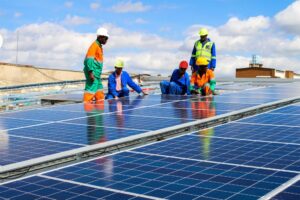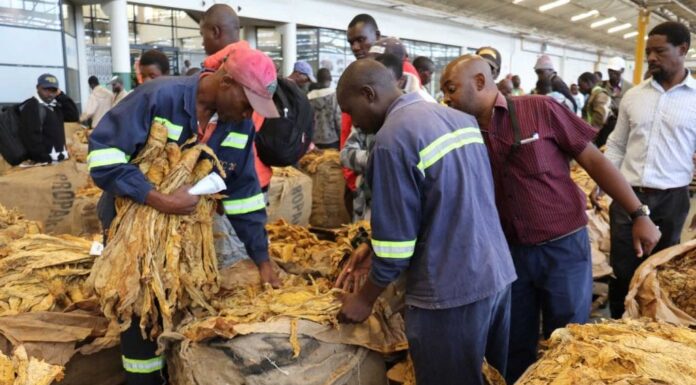
By Talkmore Gandiwa
In the tranquil hours approaching midnight, Simbarashe lit a candlestick to study with his siblings at their home in Norton, 40 kilometers from the central business district, a suburb plagued by persistent water and electricity shortages.
Amid their studies, Simbarashe could not shake off his biology teacher’s urgent assignment reminder echoing in his mind. He wondered if their home would have electricity before sunrise, recalling consecutive evenings without power or water, which necessitated trips to the borehole for laundry. These daily quests for basic amenities disrupted their already tight homework schedule.
Yet, Norton’s struggle with electricity mirrors a broader challenge gripping Zimbabwe. The nation’s towns and cities, including Harare, have expanded drastically over the years, outpacing upgrades to essential infrastructure such as water and electricity.
Originally designed for 50 thousand residents, Norton now supports over 120 thousand people, with a potential to exceed 200 thousand due to the growing population and demand for residential space. However, this growth has resulted in issues like prolonged blackouts, where power outages can last up to 20 hours a day.
Climate change exacerbates these challenges, intensifying daily struggles for survival and prompting urgent discussions on implementing a just transition program. Despite these pressing issues, government officials are grappling with stabilizing the currency and addressing revenue declines worsened by the depreciation of the local currency.
Zimbabwe’s installed electricity capacity stands at 1,200 megawatts (MW), primarily sourced from thermal and hydro-power plants located in Hwange, Kariba, Munyati, Harare, and Bulawayo. Additional imports from South Africa, Mozambique, and Zambia contribute 300MW, bringing the country’s total energy capacity to 1,500MW.
However, with a population of 14.9 million, Zimbabwe’s energy needs far surpass its current capacity, leaving 60% of the population without reliable electricity access. In rural areas, electricity access stands at a mere 17%.
The lack of electricity denies peri-urban and rural areas access to clean water, internet, radio, or television, prompting Non-Governmental Organizations to intervene by installing solar-powered boreholes in these underserved areas.
The Kariba South Power Station, Zimbabwe’s largest electricity source, has undergone significant upgrades since 2014 to increase its production capacity. However, recent extreme weather patterns, including prolonged droughts, have severely impacted its operations. Reduced water levels in the Zambezi River, which feeds Lake Kariba, have forced the plant to operate at diminished capacity, leading to frequent power shortages in both Zimbabwe and neighboring Zambia.
In 2019, authorities had to reduce power generation at Kariba to a third of its capacity due to low water levels, resulting in severe load shedding of up to 22 hours daily. The economic repercussions were profound, with manufacturing plants facing prolonged closures and small businesses resorting to costly diesel generators or adjusting operations to cope with intermittent power availability.
Extreme weather events such as Cyclone Idai, which devastated areas like Chimanimani and Chipinge in March 2019, exacerbated electricity supply challenges. The cyclone destroyed critical infrastructure, leaving communities without power for months until international aid facilitated repairs. The World Bank estimates Cyclone Idai caused total damages of $620 million in Zimbabwe, highlighting the vulnerability of existing infrastructure to climate extremes.
Despite declining costs of solar and wind energy technologies globally, Zimbabwe has been slow to adopt renewable energy policies or invest in micro-grids.
Zimbabweans are increasingly turning to solar energy solutions, evident in the proliferation of rooftop PV installations across urban communities. These community and privately owned renewable energy sources ensure uninterrupted power supply in a country accustomed to regular power cuts.
Recently, the government implemented a policy to purchase surplus electricity from owners of micro solar PV systems, enabling households to contribute excess power to the national grid. This initiative aligns with broader efforts outlined in the Zimbabwe Renewable Energy Policy launched in 2019.
The policy aims to reduce greenhouse gas emissions by 40% by 2030 and expand renewable energy’s share to 26.5% of the energy mix, emphasizing investments in hydro, solar, and biomass energy. Despite these commitments, the policy acknowledges continued reliance on coal due to financial constraints.
At a Just Energy Transition workshop hosted by Governance Zimbabwe Trust, it was reviewed that Zimbabwe is lagging in fully adopting the green initiative due to funding constraints. “The country is currently drafting policy measures expected to regulate the green initiative nationwide.”
The workshop also highlighted that every household has the ability to generate its own power, easing pressure on the national grid.
At COP26, President Emmerson Mnangagwa emphasized the impact of international sanctions on Zimbabwe’s climate change mitigation efforts while urging developed nations to fulfill their financial pledges under the Paris Agreement. He called for greater access to climate finance, criticizing delays in the $100 billion annual commitment to aid developing countries in addressing climate impacts.
Zimbabwe, with significant coal reserves in Matabeleland, faced setbacks when China terminated its coal power projects, including the $1.5 billion Hwange Power Station expansion. Despite having over 90 licensed independent power producers, many struggle to secure funding, hindering their ability to contribute to national energy solutions.
Zimbabwe’s participation at COP26 positioned it as a leading advocate for climate justice, advocating for richer nations to compensate poorer countries for climate-related losses. President Mnangagwa emphasized the Global South’s collective responsibility in holding wealthy nations accountable for funding renewable energy transitions.
However, Zimbabwe stands at a critical juncture in its energy transition journey, necessitating immediate actions to strengthen infrastructure resilience, expand renewable energy adoption, and secure sufficient funding for sustainable development.
The nation’s efforts at international forums underscore its commitment to global climate action while urging equitable support for developing nations bearing the brunt of climate change impacts.








